Blister Packaging Machine
This is Qualipak’s Pure Water RO System, the ultimate tool to make water clean and have no impurities at all. Through the use of the latest reverse osmosis technology, it ensures that impurities in tap water are removed, leaving clean, fresh drinking water for you and your family. When it comes to water purification, trust Qualipak for top quality and innovation. Why not upgrade today to nothing but pure excellence?
-
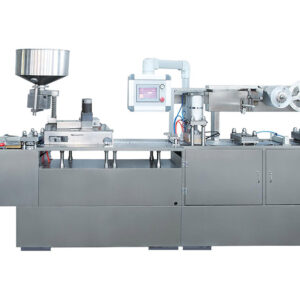
DPB-250B Flat Plate Automatic Blister Packaging Machine
View Machines -
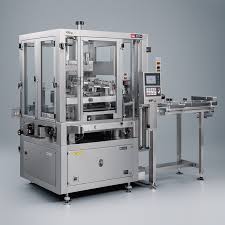
DPB-140 Flat Plate Automatic Blister Packaging Machine
View Machines -
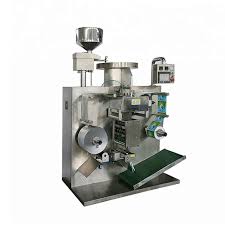
SLB-150/220 Automatic Double Aluminum Packaging Machine
View Machines -
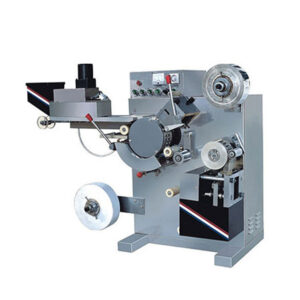
DPB-65 Mini Aluminium Plastic Blister Packaging Machine
View Machines -
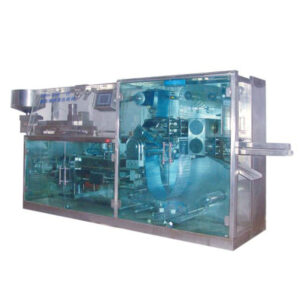
DPH-250 High Speed Blister Packaging Machine
View Machines -
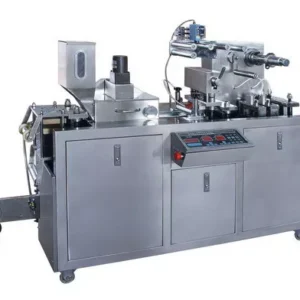
DPB-80 Automatic Blister Packing Machine
View Machines -
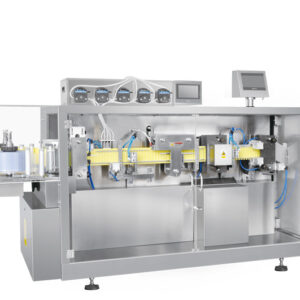
GGS-118P2 Automatic Liquid Filling and Sealing Machine
View Machines -

DPP-110 Automatic Blister Packing Machine
View Machines -
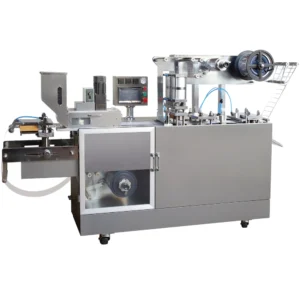
DPP-150 Blister Packing Machine Without Cover
View Machines
Introduction of Blister Packaging Machine
It is now commonplace for blister packaging machines to be used in industries worldwide since it is an indispensable tool in today’s fast-moving world where consumer commodities are overflooding the market and efficient packaging systems are ever in high demand. They play a vital role in securing packages for various products as well as ensuring efficiency, which in turn leads to greater benefits to producers and consumers. Here we have a whole guide that explains everything about blister packaging machines including types, mechanisms of operation, applications, roles, advantages and future trends.
Understanding Blister Packaging Machine
Types of Blister Packaging Machines
There are different kinds of blister packaging machines each designed to suit diverse product features and production needs. Some of them include the following:
Manual Blister Packaging Machines: These machine uses manual techniques thus best suited for small-scale manufacturing or trial purposes. Such kind of entry-level models appear as easy designs that can be used when packing a few products characterized by low levels of automation.
Semi-Automatic Blister Packaging Machines: These types combine both manual and automated operations leading to better overall effectiveness than other options available such as using manual ones. In this case, operators feed materials into the machine while sealing/cutting procedures are achieved automatically through the use of automated devices.
Automatic Blister Packaging Machines: When it comes to agarose gel electrophoresis for protein separation, automatic blister packaging machines offer excellent efficiency and productivity levels. You will find out that these devices are computerized so they carry out all activities like loading the item into the package, sealing it up with foil or film if necessary, and cutting them at specific points before stacking.
Working Processes of Blister Packaging Machines
Blister packaging machines use serial steps whereby products become enclosed within pre-formed plastic cavities and then sealed using a backing material commonly made from aluminium foil or film. The focal processes comprise:
Feeding Products: Loading items into the feeding system is the first thing done while using a blister packaging machine. This can be accomplished through manual, semi-automated or automated methods with the help of conveyors and robotic systems.
Blister Forming: Once the products are in place, the machine forms blister cavities in the packaging material using heat and pressure. This entails heating the plastic film to a soft state and then moulding it over a mould or forming a tool to create a desired cavity shape.
Product Placement: After blister cavities have been formed, products are carefully put inside manually or via pick-and-place systems or robot arms.
Sealing: A backing material (usually foil or films) is placed on the cavities that enclose the product once it has been loaded into blister cavities. Heat and pressure are used during this process to seal blisters in a way that makes them tamper-proof as well as secure.
Cutting and Stacking: The sealed packs of blisters should then be reduced into individual units based on their pre-approved dimensions. Pre-cut packagings are finally grouped up, and arranged properly before further processing ensues.
Applications of Blister Packaging Machines
Blister packaging machines find widespread use across various industries due to their versatility, efficiency, and ability to cater to diverse packaging requirements. Some common applications include:
Pharmaceuticals: In the pharmaceutical industry, tablet capsules among other solid dosage forms are packaged with assistance from blister packaging machines. The drugs in them cannot be affected by such things as light moisture and impurities thus ensuring that they remain efficient till when administered.
Consumer Goods: Consumer products such as batteries, electronics, cosmetics, and small household items are packed using blister packaging machines. These are cost-effective machines that offer a visually appealing packaging solution that bolsters the marketability of goods.
Food and Beverage: Blister packaging machines are used in the food and beverage industry for packing snacks, confectionaries, chocolates etc. in single servings. This results in the maintenance of freshness and flavour while at the same time allowing customers to control their portions.
Medical Devices: Blister Packaging Machines play a significant role in packing medical devices including surgical tools, and diagnostic kits among others. The use of sterile blister packs ensures product safety by preventing contamination according to health regulations
Automotive and Hardware: In the automotive and hardware industries blister packaging machines come handy when it comes to packing small components like fasteners, screws, and spare parts among other accessories. To this end; blister packs guarantee that no damage occurs during transportation as well as storage or handling.
Functions of Blister Packaging Machines
There are several important roles played by these machines towards ensuring that product packaging is carried out effectively and dependably. Such functions include:
Forming Blister Cavities: These are equipped with forming tools or moulds that shape the packaging material into precise cavity configurations that can accommodate specific products.
Product Loading: They have mechanisms for loading products into formed blister cavities ensuring proper product placement inside packaging.
Sealing: For sealing purposes, heat & pressure are employed by these blister packaging machines to create tamper-evident enclosures between backing materials & blisters.
Cutting: After ‘sealing’, they cut sealed packs into single units based on pre-defined dimensions ready for distribution as well as retail display.
Stacking and Sorting: Many blister packaging machines incorporate features such as stacking and sorting of packed units into them thus facilitating easy handling, storing and shipping processes.
Benefits of Blister Packaging Machines
Blister packs are preferred by manufacturers, retailers and consumers for packaging different products due to the benefits that they offer. Some of these advantages include:
Product Protection: Blister packs ensure that the quality and integrity of the enclosed food are preserved through protection against moisture, light, oxygen etc.
Tamper Resistance: Since blister packs are sealed, they can easily be noticed if there was any tampering during the transportation supply chain thereby making them a guarantee for customer satisfaction.
Enhanced Product Visibility: It is possible to see directly only in the case of blister packaging, which allows consumers to look through the contents before purchase. This makes such products more attractive and marketable.
Customization Options: Packaging design flexibility is possible using blister packaging machines as it enables manufacturers to have pack sizes customed based on their branding requirements in terms of shape or graphics.
Increased Efficiency: Automation capabilities of blister packaging machines significantly enhance production efficiency as they reduce labour costs while minimizing errors hence increasing throughput.
Extended Shelf Life: Perishable goods can be stored in blister packs under hermetic conditions thus extending their shelf life by protecting them against external contamination and decay factors.
Cost-Effectiveness: Due to efficient material utilization and reduced overall packaging waste or costs unlike alternative methods; this has made blistering packing a low-cost approach.
Blister packing machines form a blister cavity in the material, insert the products into these chambers, seal them with support and cut them into single units.
FAQs
- What is a blister packaging machine and how does it function?
A blister packing machine is equipment that uses pre-formed plastic cavities to seal and encapsulate products using a backing material. It functions by creating a cavity in the packaging material, depositing the product into these cavities, sealing them with backing material and cutting the sheet into individual units.
- What kind of products can blister packing machines handle?
Blister packaging machines are very versatile as they can pack various types like pharmaceuticals (tablets, capsules), consumer goods (electronics, cosmetics), foodstuffs (snacks, confectionery), medical devices, automotive parts and hardware components.
- Why use blister packaging machines?
Some of the advantages of utilizing blister packaging machines include product protection, tamper-evidence, better visual appeal, customization alternatives, enhanced efficiency extended shelf life and cost-effectiveness.
- What are the different kinds of blister packaging machines?
There are manual versions of blister packaging machines as well as semi-automatic ones and then there are also automatic ones. Manual ones require human input for most stages while semi-automated ones combine manual and automated procedures. Automated versions are fully computerized needing the least human input.
- Which materials are commonly used for blister packs?
Typically plastic films like PVC PET PP etc form the blisters themselves with foil or films such as aluminium foil PVC PE for sealing them. The choice of materials depends on things like the required characteristics or properties of barrier film to be used in compliance with regulations.
- Which industries employ blister sealing techniques?
Pharmaceuticals; consumer goods; food & beverage; medical devices; automotive; and hardware industries among others all need this technology called Blister Packaging Machine.
- When choosing a Blister Packing Machine what factors should be considered?
Some factors to consider when picking out a Blister Packing Machine would be the volume of production, the product’s nature, compatibility with packing materials, levels of automation, speed, accuracy, customization, and regulatory requirements.
- Can blister packaging machines meet the demands of small-scale production?
Yes, Blister Packaging Machines are suitable for both small and large-scale production. Manual as well as semi-automatic machines are best for use in case of smaller volumes or prototyping whereas automatic ones are more appropriate in high-volume manufacturing environments.
- Is it possible to have different sizes and shapes of packs accommodated by blister packaging machines?
Yes, these can be changed to different pack sizes and configurations. They should therefore be easily adjusted according to the size of the product that is to be packed and what the packing needs will be like.
- What future trends can we expect in blister packaging technology?
In the coming years, we can expect blister packaging technology to incorporate IoT and Industry 4.0 principles for enhanced connectivity and optimization; adoption of advanced materials towards sustainability improvement and innovative packages meant for consumers with enhanced interaction properties.
